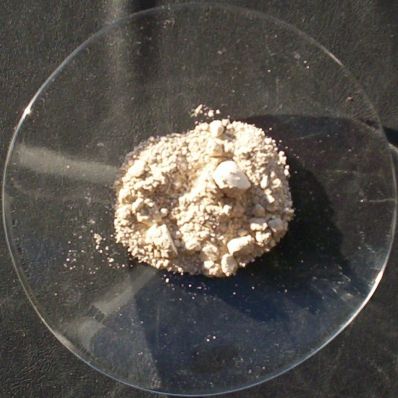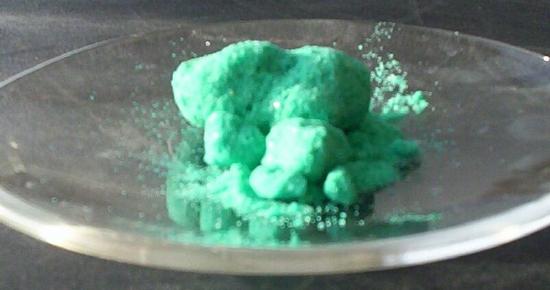Sources of Copper and Iodine Micronutrients
- Page ID
- 49953
\( \newcommand{\vecs}[1]{\overset { \scriptstyle \rightharpoonup} {\mathbf{#1}} } \)
\( \newcommand{\vecd}[1]{\overset{-\!-\!\rightharpoonup}{\vphantom{a}\smash {#1}}} \)
\( \newcommand{\dsum}{\displaystyle\sum\limits} \)
\( \newcommand{\dint}{\displaystyle\int\limits} \)
\( \newcommand{\dlim}{\displaystyle\lim\limits} \)
\( \newcommand{\id}{\mathrm{id}}\) \( \newcommand{\Span}{\mathrm{span}}\)
( \newcommand{\kernel}{\mathrm{null}\,}\) \( \newcommand{\range}{\mathrm{range}\,}\)
\( \newcommand{\RealPart}{\mathrm{Re}}\) \( \newcommand{\ImaginaryPart}{\mathrm{Im}}\)
\( \newcommand{\Argument}{\mathrm{Arg}}\) \( \newcommand{\norm}[1]{\| #1 \|}\)
\( \newcommand{\inner}[2]{\langle #1, #2 \rangle}\)
\( \newcommand{\Span}{\mathrm{span}}\)
\( \newcommand{\id}{\mathrm{id}}\)
\( \newcommand{\Span}{\mathrm{span}}\)
\( \newcommand{\kernel}{\mathrm{null}\,}\)
\( \newcommand{\range}{\mathrm{range}\,}\)
\( \newcommand{\RealPart}{\mathrm{Re}}\)
\( \newcommand{\ImaginaryPart}{\mathrm{Im}}\)
\( \newcommand{\Argument}{\mathrm{Arg}}\)
\( \newcommand{\norm}[1]{\| #1 \|}\)
\( \newcommand{\inner}[2]{\langle #1, #2 \rangle}\)
\( \newcommand{\Span}{\mathrm{span}}\) \( \newcommand{\AA}{\unicode[.8,0]{x212B}}\)
\( \newcommand{\vectorA}[1]{\vec{#1}} % arrow\)
\( \newcommand{\vectorAt}[1]{\vec{\text{#1}}} % arrow\)
\( \newcommand{\vectorB}[1]{\overset { \scriptstyle \rightharpoonup} {\mathbf{#1}} } \)
\( \newcommand{\vectorC}[1]{\textbf{#1}} \)
\( \newcommand{\vectorD}[1]{\overrightarrow{#1}} \)
\( \newcommand{\vectorDt}[1]{\overrightarrow{\text{#1}}} \)
\( \newcommand{\vectE}[1]{\overset{-\!-\!\rightharpoonup}{\vphantom{a}\smash{\mathbf {#1}}}} \)
\( \newcommand{\vecs}[1]{\overset { \scriptstyle \rightharpoonup} {\mathbf{#1}} } \)
\( \newcommand{\vecd}[1]{\overset{-\!-\!\rightharpoonup}{\vphantom{a}\smash {#1}}} \)
\(\newcommand{\avec}{\mathbf a}\) \(\newcommand{\bvec}{\mathbf b}\) \(\newcommand{\cvec}{\mathbf c}\) \(\newcommand{\dvec}{\mathbf d}\) \(\newcommand{\dtil}{\widetilde{\mathbf d}}\) \(\newcommand{\evec}{\mathbf e}\) \(\newcommand{\fvec}{\mathbf f}\) \(\newcommand{\nvec}{\mathbf n}\) \(\newcommand{\pvec}{\mathbf p}\) \(\newcommand{\qvec}{\mathbf q}\) \(\newcommand{\svec}{\mathbf s}\) \(\newcommand{\tvec}{\mathbf t}\) \(\newcommand{\uvec}{\mathbf u}\) \(\newcommand{\vvec}{\mathbf v}\) \(\newcommand{\wvec}{\mathbf w}\) \(\newcommand{\xvec}{\mathbf x}\) \(\newcommand{\yvec}{\mathbf y}\) \(\newcommand{\zvec}{\mathbf z}\) \(\newcommand{\rvec}{\mathbf r}\) \(\newcommand{\mvec}{\mathbf m}\) \(\newcommand{\zerovec}{\mathbf 0}\) \(\newcommand{\onevec}{\mathbf 1}\) \(\newcommand{\real}{\mathbb R}\) \(\newcommand{\twovec}[2]{\left[\begin{array}{r}#1 \\ #2 \end{array}\right]}\) \(\newcommand{\ctwovec}[2]{\left[\begin{array}{c}#1 \\ #2 \end{array}\right]}\) \(\newcommand{\threevec}[3]{\left[\begin{array}{r}#1 \\ #2 \\ #3 \end{array}\right]}\) \(\newcommand{\cthreevec}[3]{\left[\begin{array}{c}#1 \\ #2 \\ #3 \end{array}\right]}\) \(\newcommand{\fourvec}[4]{\left[\begin{array}{r}#1 \\ #2 \\ #3 \\ #4 \end{array}\right]}\) \(\newcommand{\cfourvec}[4]{\left[\begin{array}{c}#1 \\ #2 \\ #3 \\ #4 \end{array}\right]}\) \(\newcommand{\fivevec}[5]{\left[\begin{array}{r}#1 \\ #2 \\ #3 \\ #4 \\ #5 \\ \end{array}\right]}\) \(\newcommand{\cfivevec}[5]{\left[\begin{array}{c}#1 \\ #2 \\ #3 \\ #4 \\ #5 \\ \end{array}\right]}\) \(\newcommand{\mattwo}[4]{\left[\begin{array}{rr}#1 \amp #2 \\ #3 \amp #4 \\ \end{array}\right]}\) \(\newcommand{\laspan}[1]{\text{Span}\{#1\}}\) \(\newcommand{\bcal}{\cal B}\) \(\newcommand{\ccal}{\cal C}\) \(\newcommand{\scal}{\cal S}\) \(\newcommand{\wcal}{\cal W}\) \(\newcommand{\ecal}{\cal E}\) \(\newcommand{\coords}[2]{\left\{#1\right\}_{#2}}\) \(\newcommand{\gray}[1]{\color{gray}{#1}}\) \(\newcommand{\lgray}[1]{\color{lightgray}{#1}}\) \(\newcommand{\rank}{\operatorname{rank}}\) \(\newcommand{\row}{\text{Row}}\) \(\newcommand{\col}{\text{Col}}\) \(\renewcommand{\row}{\text{Row}}\) \(\newcommand{\nul}{\text{Nul}}\) \(\newcommand{\var}{\text{Var}}\) \(\newcommand{\corr}{\text{corr}}\) \(\newcommand{\len}[1]{\left|#1\right|}\) \(\newcommand{\bbar}{\overline{\bvec}}\) \(\newcommand{\bhat}{\widehat{\bvec}}\) \(\newcommand{\bperp}{\bvec^\perp}\) \(\newcommand{\xhat}{\widehat{\xvec}}\) \(\newcommand{\vhat}{\widehat{\vvec}}\) \(\newcommand{\uhat}{\widehat{\uvec}}\) \(\newcommand{\what}{\widehat{\wvec}}\) \(\newcommand{\Sighat}{\widehat{\Sigma}}\) \(\newcommand{\lt}{<}\) \(\newcommand{\gt}{>}\) \(\newcommand{\amp}{&}\) \(\definecolor{fillinmathshade}{gray}{0.9}\)Cuprous iodide (copper (I) iodide, CuI) is used as a source of dietary iodine and copper in table salt[1][2][3] dog food [4] and animal feed.[5]. It has the advantage of adding the micronutrient copper as well as iodine.

Copper is an essential nutrient, but it is moderately toxic at higher doses,[6], with doses of at least 11 mg/kg required for a toxic effect. Copper compounds are used as an algaecide, fungicide on grapes, and aquatic herbicide used to control seaweed in ponds, but they are much less toxic to mammals. The low solubility of CuI (0.00042 g/L or 0.42 mg/L[7]) eliminates the risk of copper poisoning, while supplying the very low 150 µg RDA for iodine.[8]
We have already seen the effects of iodine deficiency. Copper deficiency leads to high fat (triglyceride) levels, fatty liver disease, low melanin levels (susceptibility to sunburn), and low dopamine levels (associated with depression).
There are several reasons why copper (II) iodide, CuI2 with twice as much iodine per copper as CuI, isn't used as an iodine supplement, but first we have to completely understand the meanings of the formulas CuI and CuI2.
Dalton’s atomic theory was able explain the fact that CuI has a predictable composition (percentages of Cu and I), we are absolutely certain of how much Cu and how much I we get from any nutritional source of CuI. Dalton's theory also allows us to predict the compositions of as yet unknown iodine compounds; for example, we'll see how to predict the composition of CuI2 from that of CuI.
To test a theory, we first use it to make a prediction about the macroscopic world. If the prediction agrees with existing data, the theory passes the test. If it does not, the theory must be discarded or modified. If data are not available, then more research must be done. Eventually the results of new experiments can be compared with the predictions of the theory.
For example, postulate 3 in Dalton’s Atomic Theory states that atoms are not created, destroyed, or changed in a chemical reaction. Postulate 2 says that atoms of a given element have a characteristic mass: By logical deduction, then, equal numbers of each type of atom must appear on left and right sides of chemical equations such as
\[\ce{2 Cu (s) + I2 (s) -> 2 CuI (s)}\]
and the total mass of reactants must equal the total mass of products. Dalton’s atomic theory predicts Lavoisier’s experimental law of conservation of mass.
A second prediction of the atomic theory is a bit more complex. A compound a definite number of two or more types of atom. No matter how, when, or where a compound is made, it must always have the same ratios of different atoms. Thus cuprous iodide has the formula CuI no matter how much we have or where the compound came from, there will always be twice as many iodine atoms as copper atoms. Since each type of atom has a characteristic mass, the mass of one element which combines with a fixed mass of the other should always be the same. In cuprous iodide, for example, if each iodine atom is 2.00 times as heavy as a copper atom (as we now know by mass spectrometry), the ratio of masses would be
\[\dfrac{\text{mass of 1 Iodine atom}}{\text{mass of 1 copper atom}} = \dfrac{\text{2 x mass of 1 copper atom}}{\text{ mass of 1 copper atom}} = \dfrac{\text{2.00}}{\text{1.00}}\nonumber\]
No matter how many cuprous iodide molecules we have, each has the same proportion of iodine, and so any sample of cuprous iodide must have that same proportion of iodine. We have just derived the law of constant composition, sometimes called the law of definite proportions: When elements combine to form a compound, they always do so in exactly the same ratio of masses. This law had been postulated in 1799 by the French chemist Proust (1754 to 1826), four years before Dalton proposed the atomic theory, and its logical derivation from the theory contributed to the latter’s acceptance. The law of constant composition makes the important point that the composition and other properties of a pure compound are independent of who prepared it or where it came from. The carbon dioxide found on Mars, for instance, can be expected to have the same composition as that on Earth, while the natural vitamin C extracted and purified from rose hips has exactly the same composition as the synthetic vitamin C prepared by a drug company. Absolute purity is, however, an ideal limit which we can only approach, and the properties of many substances may be affected by the presence of very small quantities of impurities.
What about CuI2? It should have twice the iodine! The chemical equation for synthesis of cupric iodide is
\[\ce{Cu(s) + I2 (s) -> CuI2 (s)}\]



But cupric iodide is unstable, and immediately decomposes to CuI and I2:
\[\ce{2CuI2 (s) -> 2 CuI (s) + I2 (s)}\]
Copper (II) chloride (CuCl2) is stable and its appearance is shown above; CuI2 would have a similar appearance. So CuI2 can't be used as a supplement because it is unstable[9]. But even if it did exist, it's likely green color would probably exclude it from use in salt!
From the formulas CuI and CuI2 we can see that copper (I) iodide has only 1 iodine atom for every copper atom, while copper (II) iodide has 2 iodine atoms for every copper atom. Thus, for a given number of copper atoms, copper (II) iodide will always have twice as many iodine atoms as copper (I) iodide. Again using postulate 2 from Dalton’s Atomic Theory, the atoms have characteristic masses, and so twice as many iodine atoms correspond to twice the mass of iodine.
Therefore we can say that for a given mass of copper, copper (II) iodide will contain twice the mass of iodine that copper (I) iodide will. The halved mass of iodine in CuI resulted from the loss of I2 by CuI2 in Eq. (3).]
Example \(\PageIndex{1}\): Mass Ratio
Given that the mass of an iodine atom is 2.00 times the mass of a copper atom, calculate the mass ratio of iodine to copper in copper (II) iodide.
Solution The formula CuI2 tells us that there are 2 iodine atoms and 1 copper atom in each molecule. Thus the mass ratio is
\[\dfrac{\text{mass of 2 Iodine atoms}}{\text{mass of 1 copper atom}} = \dfrac{2 \times \text{2 x mass of 1 copper atom}}{1 \times \text{ mass of 1 copper atom}} = \dfrac{\text{4.00}}{\text{1.00}}\nonumber\]
Note that the mass of iodine per unit mass of copper is double (exactly 2x) that calculated earlier for copper (I) iodide.
The reasoning and calculations above illustrate the law of multiple proportions. When two elements form several compounds, the mass ratio in one compound will be a small whole-number multiple of the mass ratio in another. In the case of copper (I) iodide and copper (II) iodide, the mass ratios of iodine to copper are 2.00:1 and 4.00:1, respectively. The second value is a small whole-number multiple of (2 times) the first.
Until the atomic theory was proposed, no one had expected any relationship to exist between mass ratios in two or more compounds containing the same elements. Because the theory predicted such relationships, Dalton and other chemists began to look for them. Before long, a great deal of experimental evidence was accumulated to show that the law of multiple proportions was valid. Thus the atomic theory was able to account for previously known facts and laws, and it also predicted a new law. In the process of verifying that prediction, Dalton and his contemporaries did many additional quantitative experiments. These led onward to more facts, more laws, and, eventually, new or modified theories. This characteristic of stimulating more research and thought put Dalton’s postulates in the distinguished company of other good scientific theories.
From ChemPRIME: 2.4: Testing the Atomic Theory
References
- ↑ Patnaik, Pradyot (2003). Handbook of inorganic chemicals. New York: McGraw-Hill. pp. 268–269. ISBN 0-07-049439-8. http://books.google.com.sg/books?id=Xqj-TTzkvTEC&pg=PA268.
- ↑ Ruth Winter, Consumer's Dictionary of Food Additives: A Consumer's Dictionary of Cosmetic Ingredients Vitamin E www.naturalpedia.com/iodized.html
- ↑ Ash, M. and Ash, I. "Handbook of Preservatives", Synapse Information Resources, 2004, p.340 . http://books.google.com/books?id=XZ2QB7bu5LwC&pg=PA345&lpg=PA345&dq=cuprous+iodide+supplement&source=bl&ots=6L8ZpxAPn-&sig=9aCIFpxWdoGxez4ghf1dHF5f1SE&hl=en&ei=VJ0DTKD6DYGBlAfW9omjCA&sa=X&oi=book_result&ct=result&resnum=1&ved=0CB4Q6AEwADgK#v=onepage&q=cuprous%20iodide%20supplement&f=false
- ↑ Dog Food http://www.peteducation.com/article.cfm?c=2+1659+1662&aid=2594
- ↑ Clemson Agricultural Extension Circular #503, p. 509; www.clemson.edu/psapublishing/PAGES/ADVS/EC509.pdf
- ↑ en.Wikipedia.org/wiki/Copper(II)_sulfate#Toxicological Effects
- ↑ en.Wikipedia.org/wiki/Cuprous_iodide
- ↑ en.Wikipedia.org/wiki/Dietary_Reference_Intake
- ↑ The instability arise from the fact that the copper (II) in it have a stronger attraction for electrons, and remove them from the iodine, making copper (I) iodide. http://www.chemguide.co.uk/inorganic/transition/copper.html
Contributors and Attributions
Ed Vitz (Kutztown University), John W. Moore (UW-Madison), Justin Shorb (Hope College), Xavier Prat-Resina (University of Minnesota Rochester), Tim Wendorff, and Adam Hahn.


